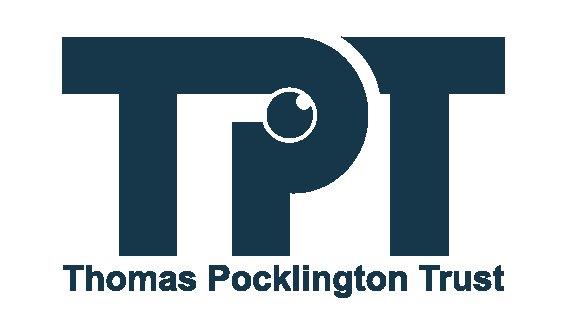Sight Loss Charities join to Lobby Government for More Accessible Medical Tests

Thomas Pocklington Trust logo.
Visionary recently added its signature to a ministerial letter, alongside other sight loss charities, calling for a government task force to make medical tests more accessible to blind and partially sighted people.
Sent to DHSC and DSIT, along with shadow ministers, this letter was drafted by Thomas Pocklington trust (TPT), but co-signed by sight loss partner organisations, alongside several others outside our sector.
Thankfully, we can actually say the backdrop to this letter is a positive one. It really began with the pandemic like so many other recent changes to how we all live and work. A Covid response working group of sight loss charities was quickly set up during the crisis to make LFTs accessible, involving representatives from TPT, RNIB, Visionary and the Macular Society. They worked with the UK Health Security Agency (UKHSA) to create a process by which people with vision impairments could undertake LFT tests for covid and read their results with support from trained staff via the Be My Eyes app. This did not work for all, of course, but it did pave the way for more work in this field.
Knowledge from covid work was soon taken forward to make bowel cancer screening accessible. This was a response to such tests becoming mandatory to all over-50s. Unfortunately for many people with disabilities, the expectation is that tests should be conducted by individuals at home. This poses quite a challenge for many users and we needed more than a smartphone solution this time. People really need to know how to use the kit if we are to have equity around testing and avoid the risk of vision impaired people detecting this often symptomless condition later than the general public.
Another working group was set up with NHS England, resulting in a new kit design called the FITAid which is easier to handle by those who cannot see or have dexterity impairments. Put bluntly, the problem is taking a poo sample: getting the swab into a small cartridge device which contains the critical liquid and yields the test result later. It’s not hard to imagine the difficulty of bringing the two halves of a swab device together without sight, the left hand literally can’t tell what the right is doing!
The simple innovation is an additional plastic tray, enclosed in the standard kit, allowing the user to click the two parts of the swab device together. You slide each half along a channel in the centre of the tray so they line up exactly. This avoids making any mess or spoiling the sample. The same tray also features a QR code with instructions, while large print or braille versions can be requested from GPs.
A trial of this device is ongoing, exploring what those with sight loss think of this test kit, but it is clear that there will still be problems for some. If the dispatcher doesn’t know the recipient has impaired vision, they won’t know their specific access needs so cannot enclose audio or braille instructions for example. This probes deeper into the issue of the Accessible Information Standard (AIS) – all participating sight loss bodies impressed the point that any similar access measures in the future will only work properly if people get information in their preferred formats.
This letter, therefore, serves to bring these issues to the Government’s attention but in a positive fashion. After all, it is in the context of the above, the testing work that has already gathered momentum. We are trying to get in early before cheaper testing methods become the norm or commonplace. We don’t want to keep developing access equipment retrospectively.
The letter raises the volume and has gained the support of such charities as Cancer Research UK and National Voices. It’s just one of many steps to full inclusion on devices and information, but we expect this kit to be available to all in the next year or so. It doesn’t take long for us to start imagining more usable diabetes tests and that’s before we even consider pregnancy for instance. We just need to keep channels open and keep talking about it. An official, cross-sector group could really drive further innovation if the Government will is there.
We hope to update you further as steps are taken, but in the meantime, it’s well worth frontline staff making themselves familiar with the kit so they can help explain how it works.
End
Join our mailing list
If you would like to receive regular news and updates about our work, then you can sign up to our mailing list.
